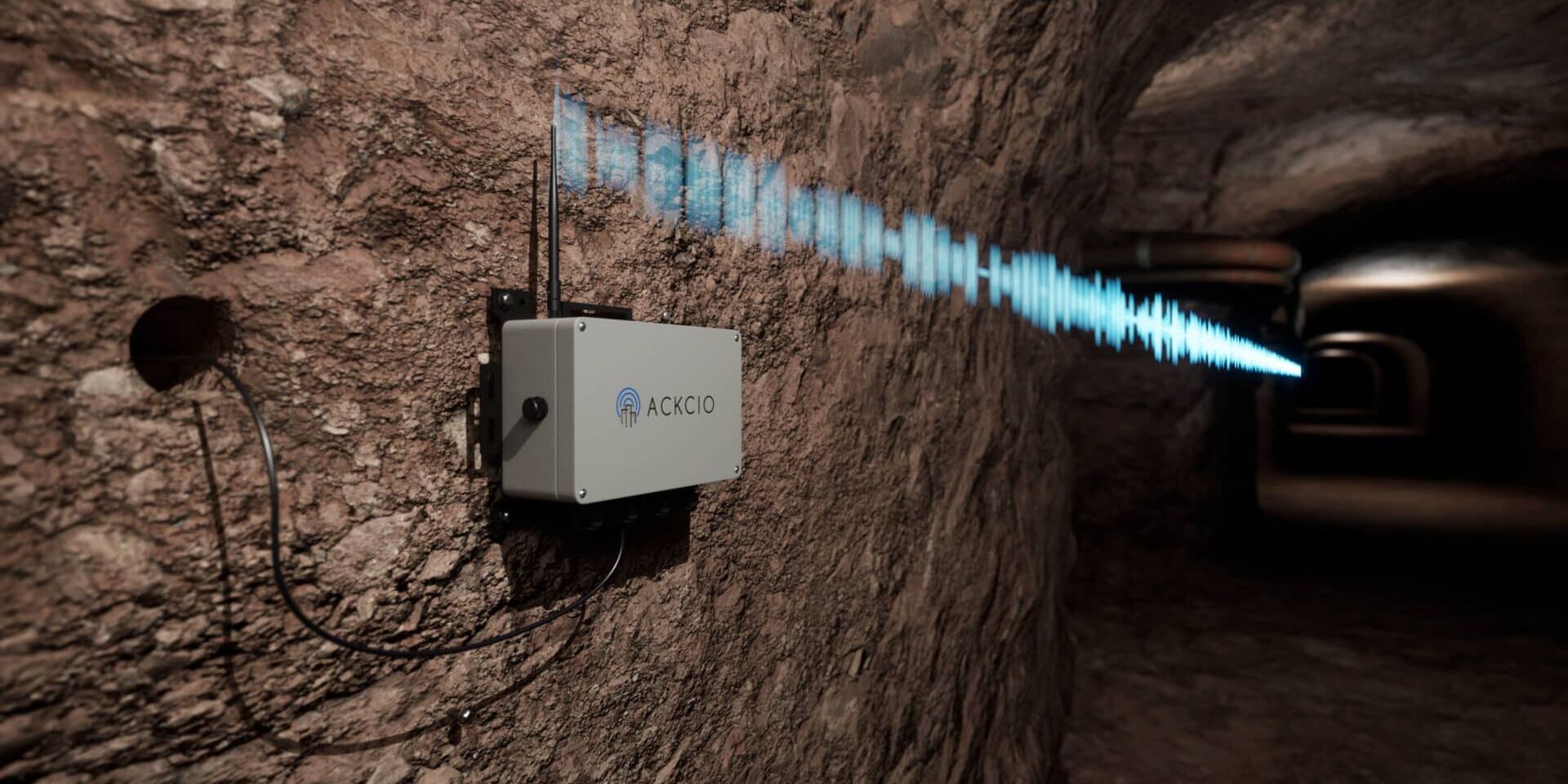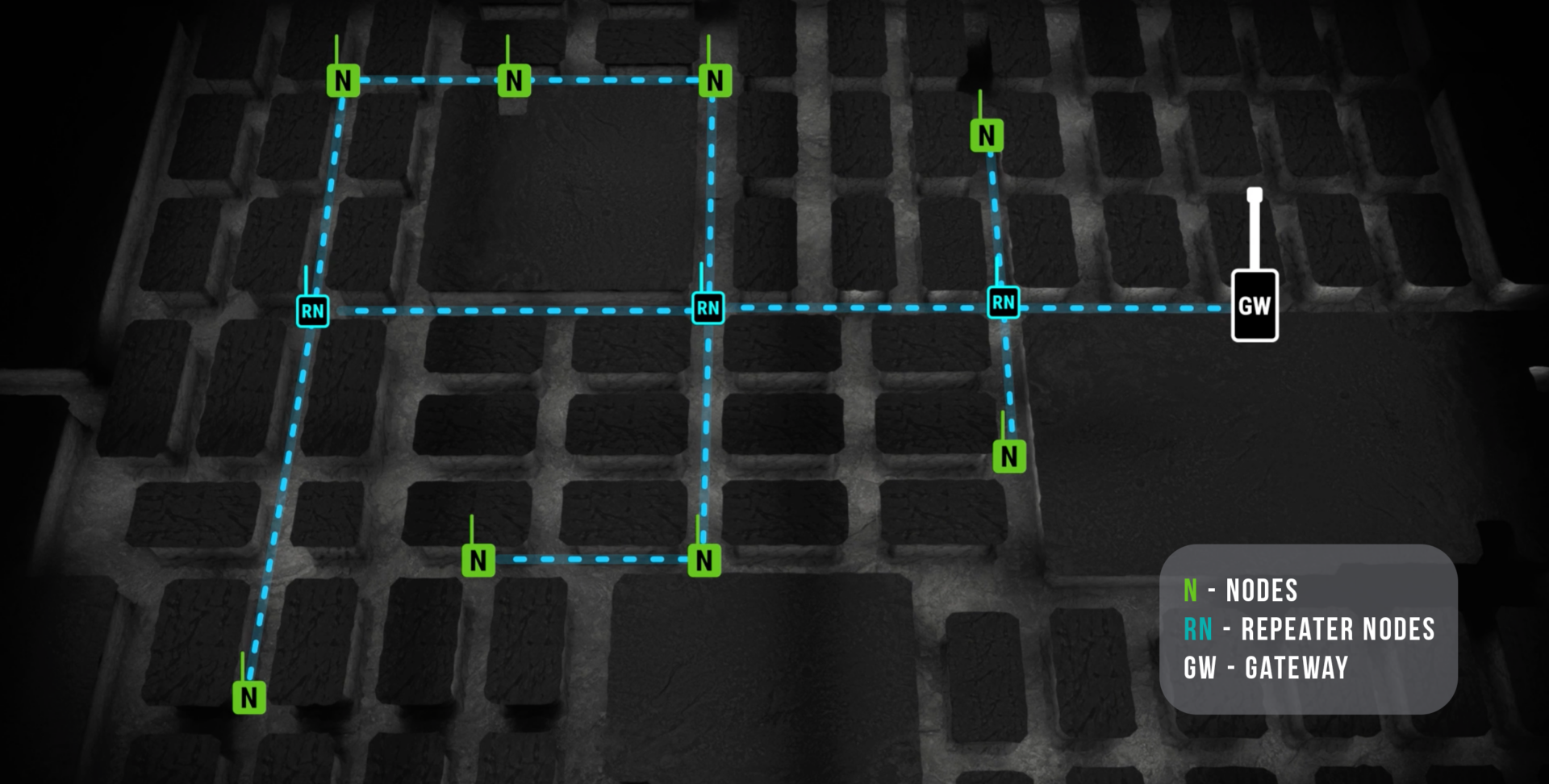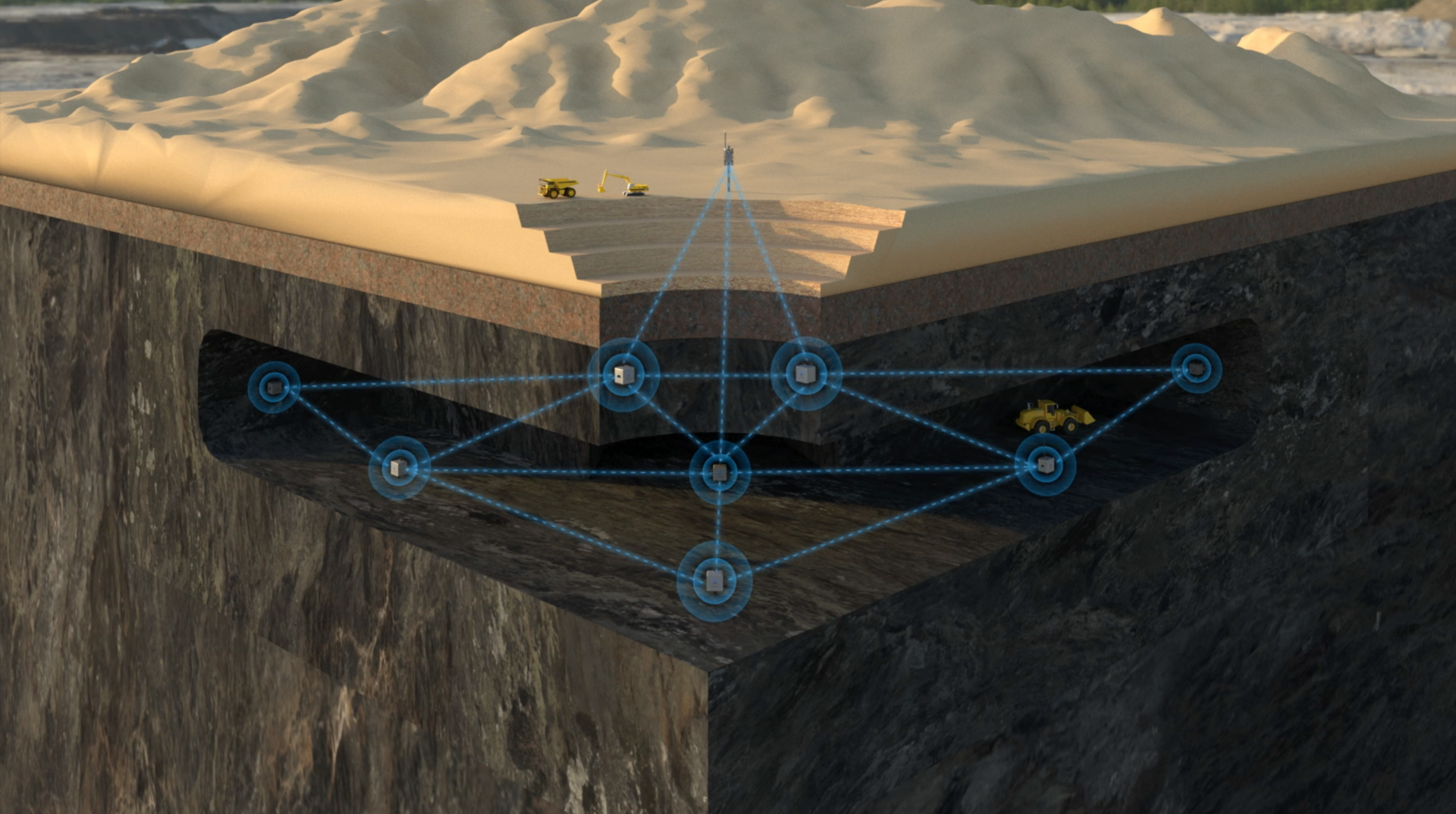Why Long-Range Wireless Mesh Connectivity is the Best Choice For Underground Mine Monitoring

Underground mines are incredibly complex and challenging worksites. Wireless technology is constantly improving how we monitor projects. New products are regularly introduced to the market, like short-range systems using Zigbee (or other 2.4GHz radio) and LoRa-based systems. Some enhance range and reliability by using repeaters in a tree-like setup.
While these advancements, which extends the former range of this kind of network, is promising, it still has a number of limitations. Simply put, it’s not the ideal solution for every scenario, especially underground applications.
In this post, we explore the benefits and limitations of this emerging technology against the industry-proven long-range wireless mesh network offered by our Ackcio Beam system. Mine operators have been using our system for years to gather data in real-time from the toughest underground conditions.
Here are the top three differences.
1. Install Nodes anywhere
LoRa repeaters need constant power through the mine’s main power outlets, which can be hard to find underground. This restriction means they often cannot be placed in optimal locations for reliable data transmission.

Contrast this with Ackcio Nodes, which operate energy-efficiently on batteries. This allows our devices to be installed in any location for optimal data transmission, regardless of power availability. By strategically placing Ackcio’s Repeater Nodes throughout the mine, the overall underground wireless network is significantly enhanced.
Node placement is crucial in mines for enhancing network reliability by mitigating the risks of signal obstruction and interference, which are two of the most frequent causes of data loss.
The bottom line: While power supply dictates the placement of LoRa repeaters, Ackio’s wireless, battery-powered Nodes can be installed anywhere underground for optimal network reliability.
2. Monitor large, complex projects
LoRa tree networks use repeaters to relay data from underground nodes to the gateway receiver in a multi-hop setup.
However, they have limitations. LoRa relies on a tree topology in which each node depends on a predetermined node to relay the data toward the Gateway.
A tree topology is vulnerable to single points of failure due to various forms of obstructions and interferences commonly found in an underground mine environment. If one of the repeaters is disrupted, it can result in the entire subsection of the network failing.

Ackcio’s self-healing, multi-hop, multi-route mesh topology, where nodes can communicate with each other and the gateway, overcomes this limitation. It provides numerous redundant paths for data transmission. Nodes automatically determine the optimal route when obstruction or interference occurs. This data reliability is bolstered by multiple layers of redundancy, including onboard flash memory and background retransmissions.
And with up to 12 “hops” between nodes and the gateway receivers, Ackcio’s extendable range is unbeatable.
This was a significant advantage in the Obuasi mine, a large gold mine in Ghana that needed monitoring over a large and complicated site stretching 12km deep into the Earth. The Ackcio Beam system was used to connect to extensometers to monitor rock movement within the mine. The deployment required 6 Ackcio Digital Nodes that communicated the extensometer readings via strategically placed Repeater Nodes to a central Gateway that was installed at the mine’s control room. A LoRa tree system would not have been able to meet the challenges of this mine given the complicated layout and the lack of power within the mine’s extraction drives to power LoRa tree repeaters.
The bottom line: Mesh topology provides better data reliability, and risk management in challenging underground mines.
3. Reduce costs, deployment hassles
Every Ackcio Beam Node is also a Repeater–they are designed for this double-duty right out of the box. Contrast this to LoRa tree networks, in which you need separate repeaters and sensor nodes. This not only becomes a deployment headache but also increases the cost.
Ackcio offers a simple, cost-efficient solution for any mine. And it can be easily adapted as the project’s monitoring needs evolve. This was an advantage at a high-tech gold and copper mine in Eastern Europe that used Ackio to automate readings from multi-point borehole extensometers deep underground. In the future, if the owner wants to extend the monitoring further and deeper into the mine, they can simply add new sensors and nodes to the existing system. And if they ever need to adjust the timing or frequency of readings, Ackcio’s two-way communications protocol allows them to do so remotely, and in near real-time.
The bottom line: Ackcio makes deployment smooth and easy and reduces monitoring costs.
Mining is complex, but your underground monitoring doesn’t need to be. Ackcio has the simplest, most cost-effective, and most reliable solution on the market, extending your data collection to previously unimaginable depths below ground.


